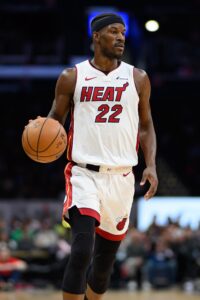The 2025 NBA draft is still over 10 months away, but a number of teams have already traded away their first-round picks for ’25, and more clubs may do so before this season’s trade deadline.
We’ll use the space below to keep tabs on each team’s first-round pick for 2025, continually updating it as necessary throughout the year.
We’ve listed all 30 teams here, so even if a team hasn’t traded its first-round pick, that will be noted. We’ll also provide details on the protections for each traded pick, including what happens to the pick in 2026 if it doesn’t change hands in 2025.
Here’s the full breakdown on the status of each 2025 first-round pick:
Note: Teams marked with an asterisk (*) have traded away their 2026 first-round pick (either unprotected or with protection) and can’t freely trade away their 2025 first-rounder due to the Stepien Rule.
Atlantic
- Boston Celtics: Own pick.
- Brooklyn Nets: Own pick.
- New York Knicks: Traded to Nets (unprotected).
- Philadelphia 76ers: Traded to Thunder (top-six protected).
- If this pick lands in its protected range, the Sixers would instead owe the Thunder their 2026 first-round pick (top-four protected).
- Toronto Raptors: Own pick.
Central
- Chicago Bulls: Own pick.
- Cleveland Cavaliers: Traded to Jazz or Suns (unprotected).
- The Jazz will receive the most favorable pick of the Cavaliers’ and Timberwolves’ first-rounders; the Suns will receive the least favorable of the two.
- Detroit Pistons: Traded to Timberwolves (top-13 protected).
- If this pick lands in its protected range, the Pistons would instead owe the Knicks their 2026 first-round pick (top-11 protected).
- Indiana Pacers (*): Own pick.
- Milwaukee Bucks: Traded to Nets (top-four protected) or Pelicans (5-30 protected).
- The Bucks’ obligation to whichever team doesn’t receive this pick will be extinguished.
- The Bucks’ obligation to whichever team doesn’t receive this pick will be extinguished.
Southeast
- Atlanta Hawks: Traded to Spurs (unprotected).
- Charlotte Hornets: Traded to Kings (top-14 protected).
- If this pick lands in its protected range, the Hornets would instead send the Kings their 2026 and 2027 second-round picks.
- Miami Heat: Traded to Thunder (top-14 protected).
- If this pick lands in its protected range, the Heat would instead owe the Thunder their 2026 first-round pick (unprotected).
- Orlando Magic: Own pick.
- Washington Wizards: Traded to Knicks (top-10 protected).
- If this pick lands in its protected range, the Wizards would instead owe the Knicks their 2026 first-round pick (top-eight protected).
Northwest
- Denver Nuggets: Traded to Magic (top-five protected).
- If this pick lands in its protected range, the Nuggets would instead owe the Magic their 2026 first-round pick (top-five protected).
- Minnesota Timberwolves: Traded to Jazz or Suns (unprotected).
- The Jazz will receive the most favorable pick of the Timberwolves’ and Cavaliers’ first-rounders; the Suns will receive the least favorable of the two.
- Oklahoma City Thunder: Own pick.
- The Thunder have the right to swap their own first-round pick for the Rockets’ pick (top-10 protected) or the Clippers’ first-round pick. If the Rockets receive the Thunder’s pick, they would have the right to swap it to Brooklyn for the Suns’ first-round pick.
- The Thunder have the right to swap their own first-round pick for the Rockets’ pick (top-10 protected) or the Clippers’ first-round pick. If the Rockets receive the Thunder’s pick, they would have the right to swap it to Brooklyn for the Suns’ first-round pick.
- Portland Trail Blazers: Traded to Bulls (top-14 protected).
- If this pick lands in its protected range, the Trail Blazers would instead owe the Bulls their 2026 first-round pick (top-14 protected).
- Utah Jazz: Traded to Thunder (top-10 protected).
- If this pick lands in its protected range, the Jazz would instead owe the Thunder their 2026 first-round pick (top-eight protected).
Pacific
- Golden State Warriors: Traded to Heat (top-10 protected).
- If this pick lands in its protected range, the Warriors would instead owe the Heat their 2026 first-round pick (top-10 protected).
- Los Angeles Clippers (*): Traded swap rights to Thunder.
- The Thunder have the right to swap their own first-round pick for the Rockets’ pick (top-10 protected) or the Clippers’ first-round pick.
- Los Angeles Lakers: Traded to Hawks (unprotected).
- Phoenix Suns: Traded to Nets or Rockets (unprotected).
- The Thunder have the right to swap their own first-round pick for the Rockets’ pick (top-10 protected) or the Clippers’ first-round pick; the Rockets have the right to swap whichever pick they end up with to Brooklyn for the Suns’ first-round pick.
- Sacramento Kings: Traded to Hawks (top-12 protected).
- If this pick lands in its protected range, the Kings would instead owe the Hawks their 2026 first-round pick (top-10 protected).
Southwest
- Dallas Mavericks: Own pick.
- Houston Rockets (*): Traded swap rights to Thunder (top-10 protected).
- The Thunder have the right to swap their own first-round pick for the Rockets’ pick (top-10 protected) or the Clippers’ first-round pick; the Rockets have the right to swap whichever pick they end up with to Brooklyn for the Suns’ first-round pick.
- Memphis Grizzlies: Traded to Wizards (top-14 protected).
- If this pick lands in its protected range, the Grizzlies would instead send the Wizards either the Celtics’, Pacers’, Clippers’, or Heat’s 2026 second-round pick (whichever is most favorable) and the Hawks’ 2027 second-round pick.
- If this pick lands in its protected range, the Grizzlies would instead send the Wizards either the Celtics’, Pacers’, Clippers’, or Heat’s 2026 second-round pick (whichever is most favorable) and the Hawks’ 2027 second-round pick.
- New Orleans Pelicans: Own pick.
- San Antonio Spurs: Own pick.
Information from RealGM was used in the creation of this post.
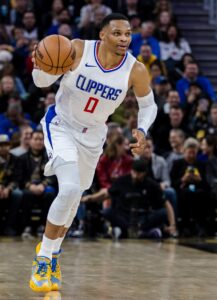
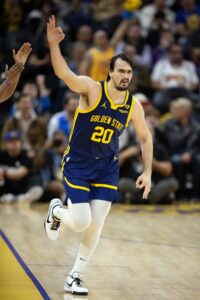 Losing Caldwell-Pope allowed the Nuggets to free up their taxpayer mid-level exception, which they used to sign stretch forward/center
Losing Caldwell-Pope allowed the Nuggets to free up their taxpayer mid-level exception, which they used to sign stretch forward/center 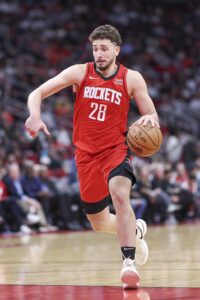 Chris Duarte
Chris Duarte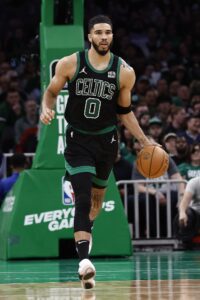 Celtics forward
Celtics forward 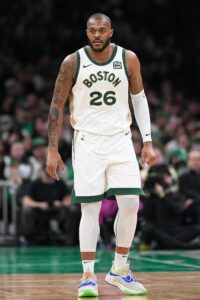
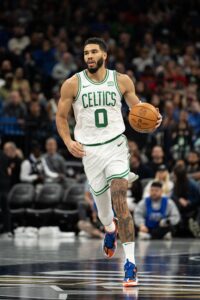 Besides re-signing most of their own free agents, the Celtics agreed to long-term extensions with All-NBA forward
Besides re-signing most of their own free agents, the Celtics agreed to long-term extensions with All-NBA forward 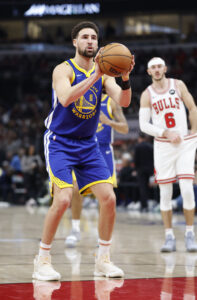
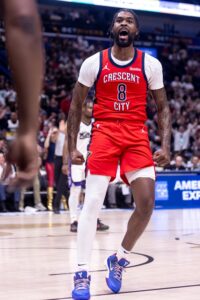 That didn’t happen though. Instead, Jones opted to sign a three-year, $30MM contract with the Clippers, prompting the Mavs to pivot to another free agent,
That didn’t happen though. Instead, Jones opted to sign a three-year, $30MM contract with the Clippers, prompting the Mavs to pivot to another free agent, 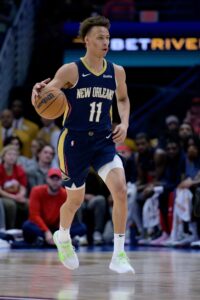 Acquired the draft rights to
Acquired the draft rights to  While Atlanta made two more minor deals this summer, trade candidates like Young,
While Atlanta made two more minor deals this summer, trade candidates like Young,  The U.S. squad is currently a 16-point favorite in Saturday’s rematch, according to
The U.S. squad is currently a 16-point favorite in Saturday’s rematch, according to 